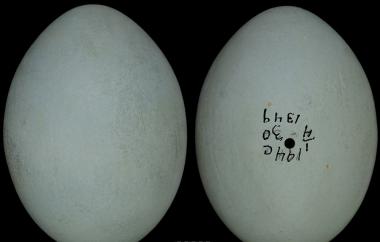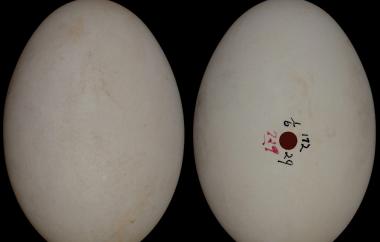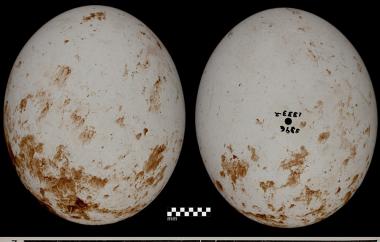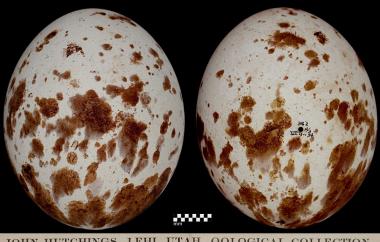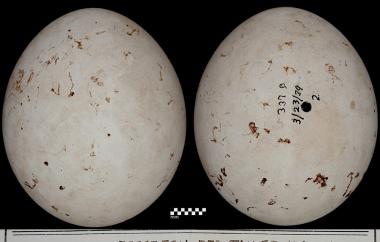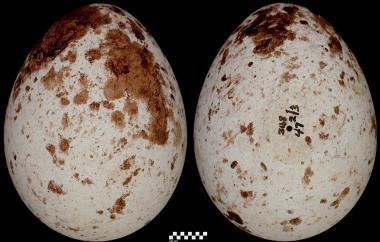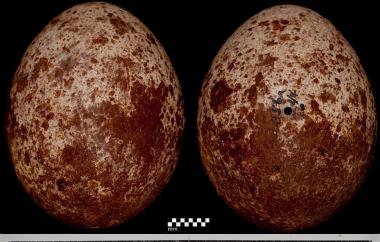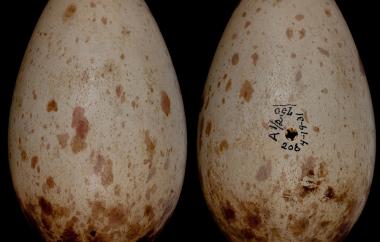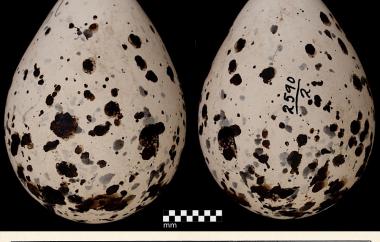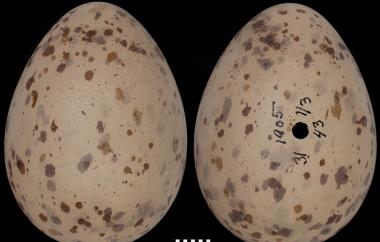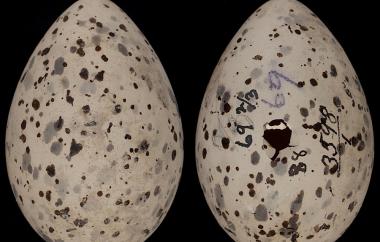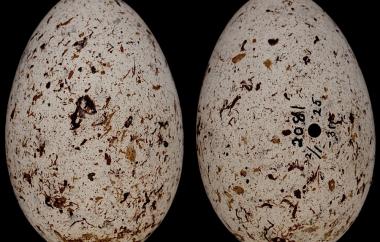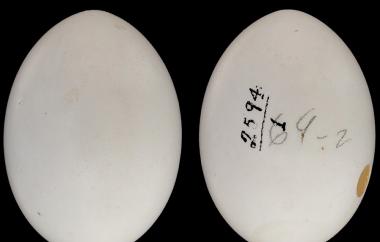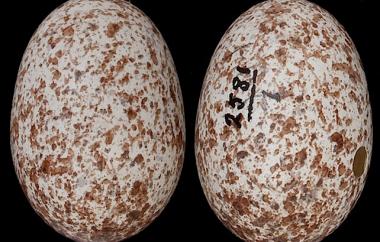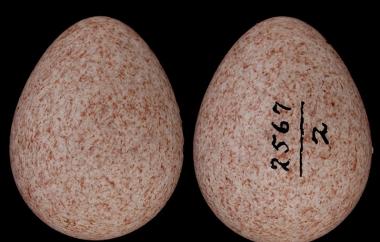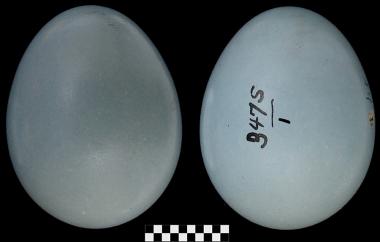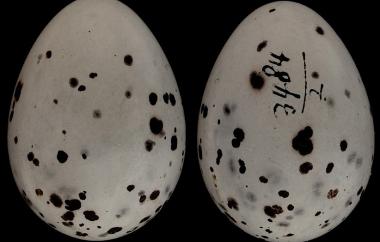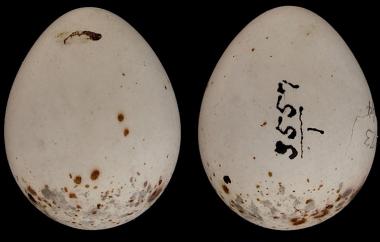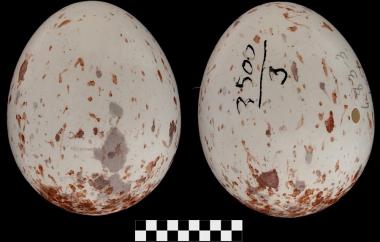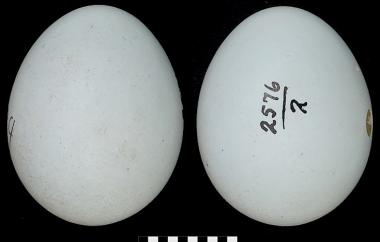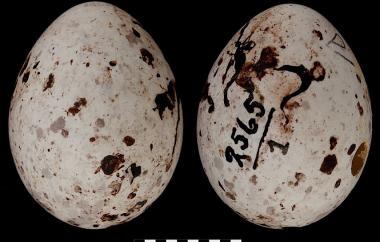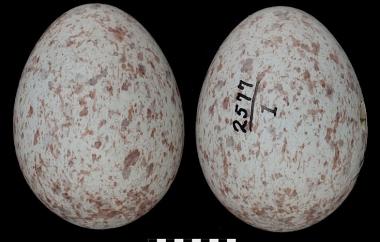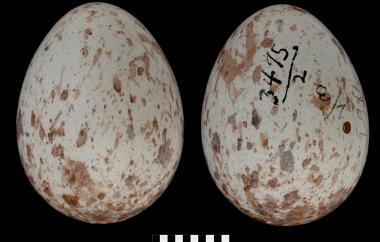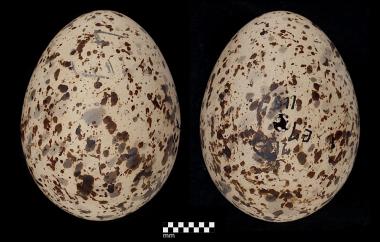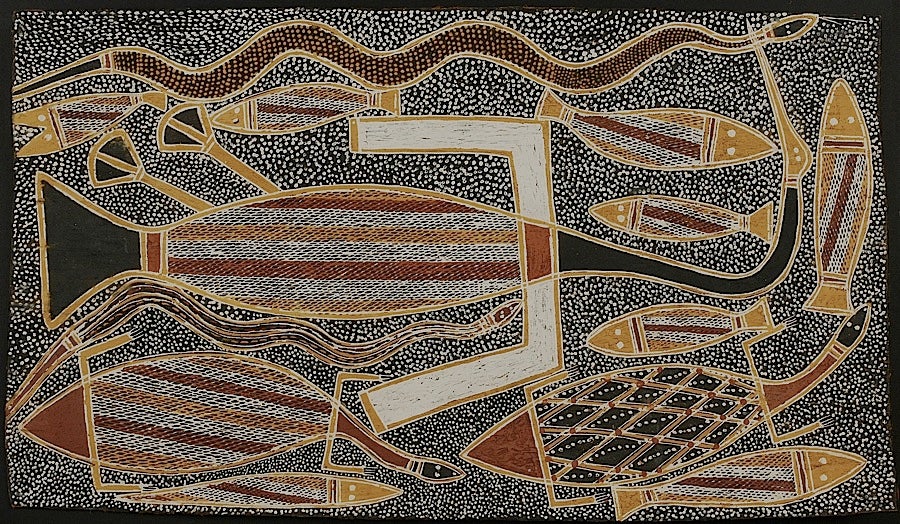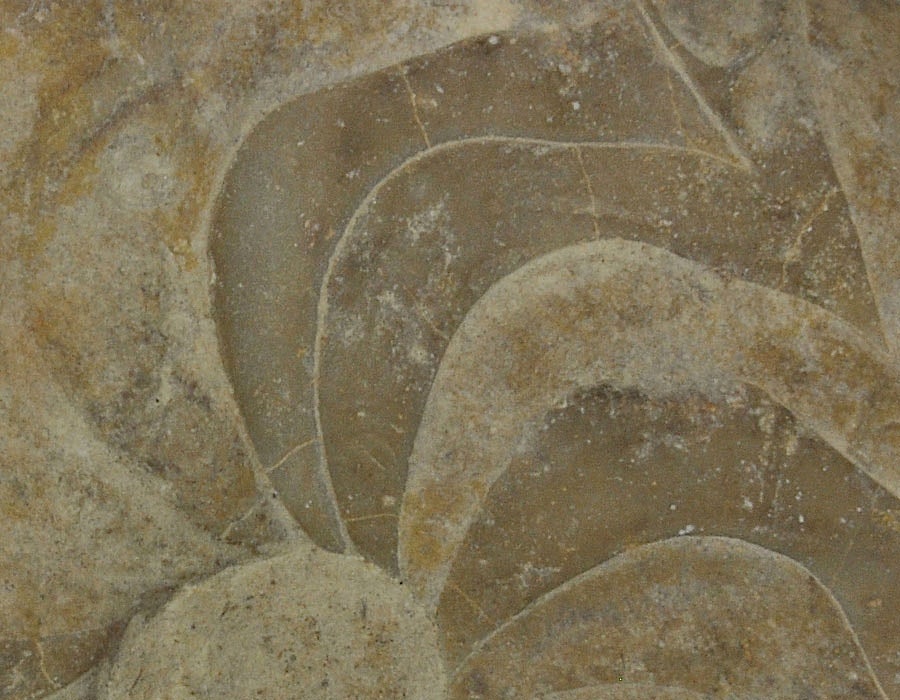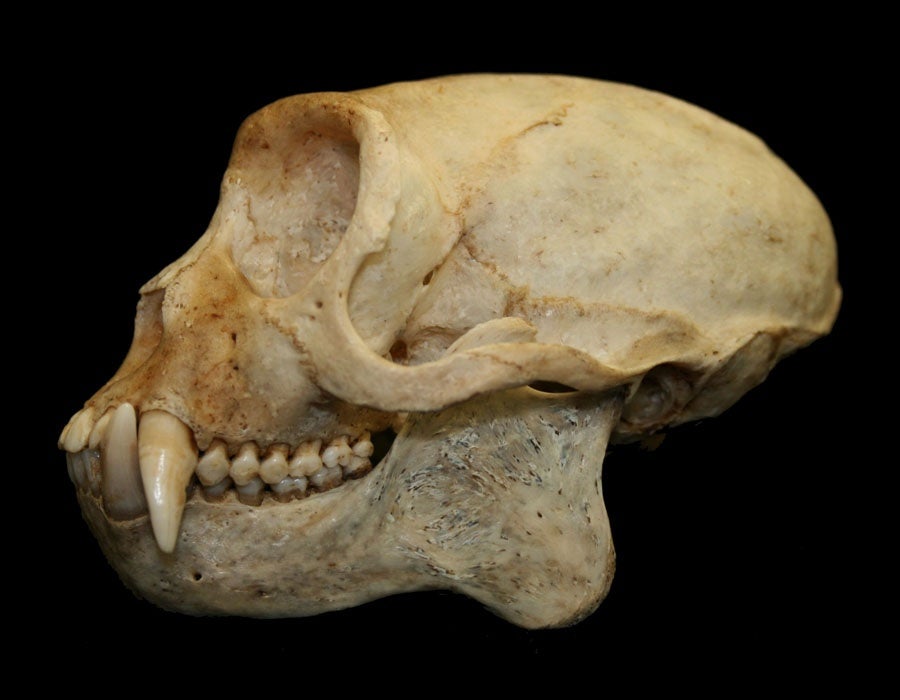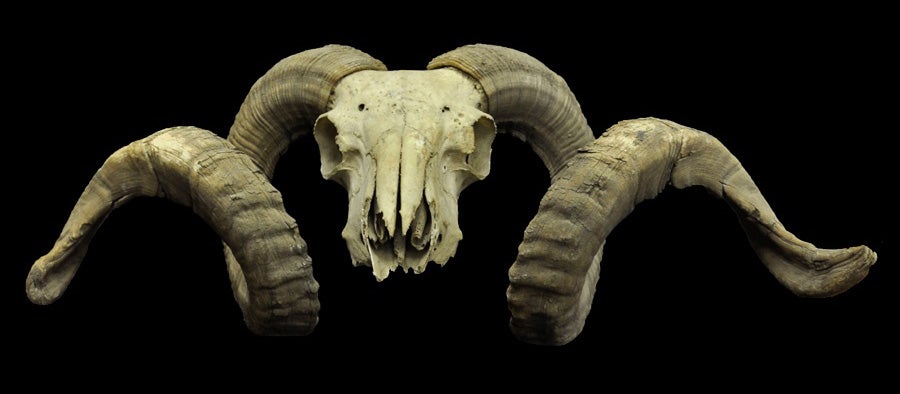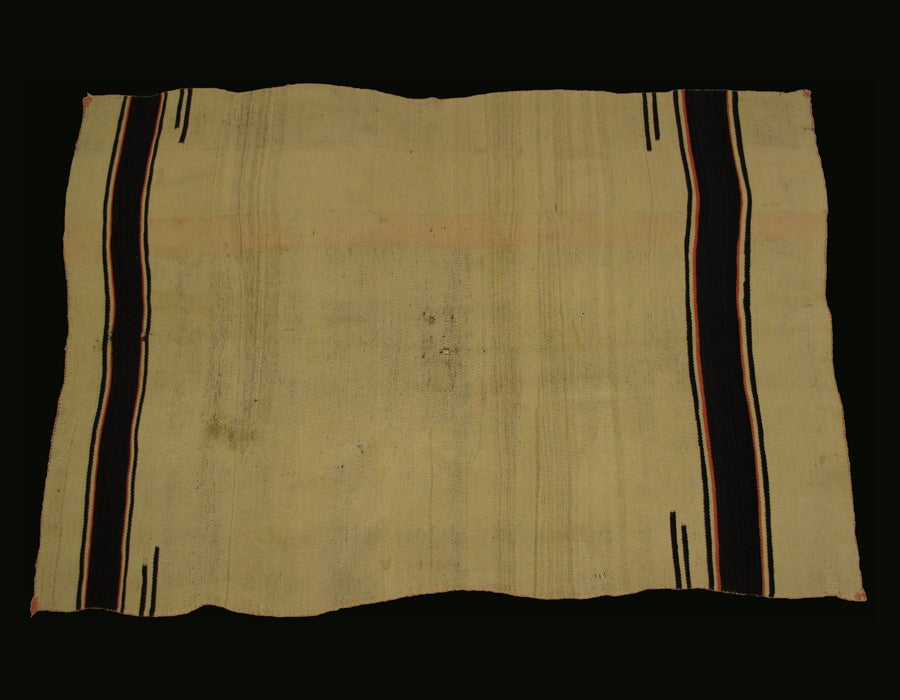Collecting is a hobby for some, an obsession for others. In the 19th and early 20th century, the field of oology developed as thousands of bird-lovers and ornithologists around the world collected the eggs of wild birds. Ironically, as its popularity grew, a discipline that emerged out of a love for birds threatened the survival of many wild bird species. As a result, many states and countries passed laws forbidding the collecting of wild bird eggs. Many oological collections still exist, however—often with detailed information on the date, location, collector, and context of individual eggs or clutches. Fortunately, many of these collections are preserved in natural history museums around the world. Today, they illustrate the incredible beauty and ingenuity of nature, but they are also a rich source of information about the distribution of birds in the past, their diet and nesting habits, climate change, and even the growing levels of pollution life on earth has had to contend with.
The core of the Museum of Natural and Cultural History’s ornithological collections originated through the efforts of Dr. Albert G. Prill. Born in 1869, in Springville, New York, Prill graduated with an M.D. from the University of Buffalo in 1890. That year, he moved to Salem, and subsequently Lebanon, Oregon, before settling in Scio in 1896. While active as a physician and civic leader, Prill pursued his love of ornithology. With a permit from the Smithsonian Institution, Prill collected eggs from around the world and specimens were added through exchanges with other collectors and the efforts of the local community.
Returning from a trip to New York in 1900, Prill brought with him a large collection of skins and eggs assembled since he was a boy. In the late 1890s, he donated 600 specimens to San Francisco’s Golden Gate Park Museum (no Oregon schools were equipped to receive them) and other specimens went to the Smithsonian Institution and Oregon State University. Prill gave the bulk of his collection to the University of Oregon in 1945, including thousands of mounted birds, skins, nests and egg sets, all meticulously documented and preserved for future generations to study and enjoy. A sample of these eggs and their associated catalog cards are shown here. Images © UO Museum of Natural and Cultural History. Production of this gallery was generously supported by The Ford Family Foundation.
Great Blue Heron, Ardea herodias - 67.38 x 49.72 mm
Canada Goose, Branta canadensis - 85.03 x 58.15 mm
Red-shouldered Hawk, Buteo lineatus - 51.58 x 42.68 mm
Swainson's Hawk, Buteo swainsoni - 58.91 x 48.07 mm
Red-tailed Hawk, Buteo jamaicensis - 60.68 x 51.19 mm
Ferruginous Hawk, Buteo regalis - 61.46 x 47.08 mm
Peregrine Falcon, Falco peregrinus - 53.28 x 42.77 mm
Virginia Rail, Rallus limicola - 31.54 x 23.01 mm
Sandhill Crane, Grus canadensis - 106.18 x 62.69 mm
Killdeer, Charadrius vociferus - 37.54 x 27.98 mm
Semipalmated Plover, Charadrius semipalmatus - 30.62 x 24.77 mm
Long-billed Curlew, Numenius americanus - 69.3 x 46.45 mm
Iceland Gull, Larus glaucoides - 64.67 x 47.85 mm
Forster's Tern, Sterna forsteri - 46.22 x 31.36 mm
Black Guillemot, Cepphus grille - 58.19 x 38.46 mm
Xantus's Murrelet, Synthliboramphus hypoleucus - 58.19 x 38.46 mm
Mourning Dove, Zenaida macroura - 29.89 x 21.53 mm
Horned Lark, Eremophila alpestris - 23.19 x 16.26 mm
House Wren, Troglodytes aedon - 15.81 x 12.53 mm
Wood Thrush, Hylocichla mustelina - 24.74 x 19.39 mm
Cedar Waxwing, Bombycilla cedrorum - 21.25 x 15.52 mm
Black-throated Green Warbler, Dendroica virens - 17.4 x 13.05 mm
Prairie Warbler, Dendroica discolor - 16.6 x 12.95 mm
Yellow-breasted Chat, Icteria virens - 20.7 x 16.82 mm
Lark Bunting, Calamospizza melanocorys - 21.34 x 17.27 mm
Chestnut-collared Longspur, Calcarius ornatus - 18.38 x 14.17 mm
Red-breasted Grosbeak, Pheucticus ludoicianus - 23.42 x 17.82 mm
Black-headed Grosbeak, Pheucticus melanocephalus - 25.17 x 19.14 mm
House Sparrow, Passer domesticus - 30.62 x 24.77 mm

